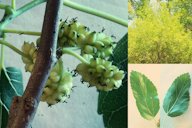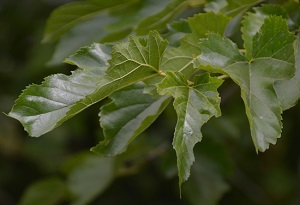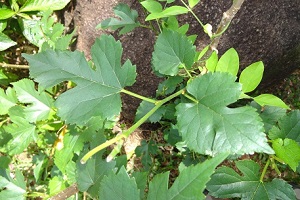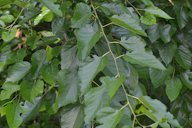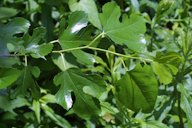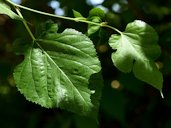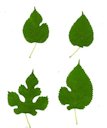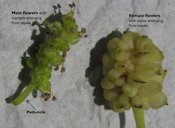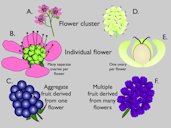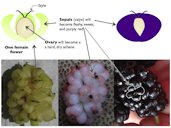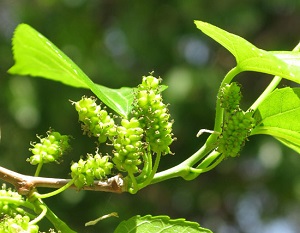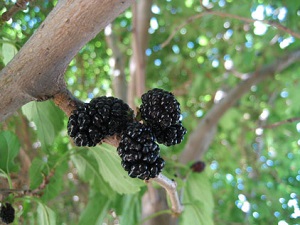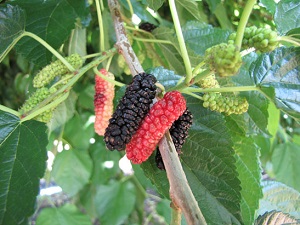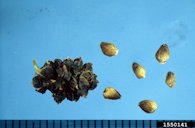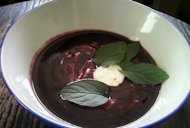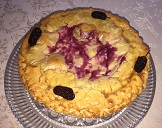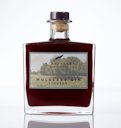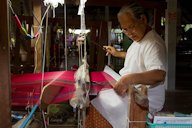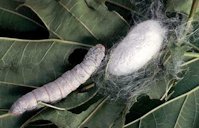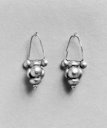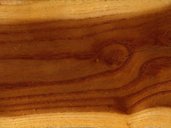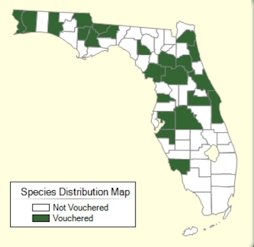| Mulberry, White - Morus alba | |||||||||||||||||||||||||||||||||||||||||||||||||||||||||||||||||||||||||||
|---|---|---|---|---|---|---|---|---|---|---|---|---|---|---|---|---|---|---|---|---|---|---|---|---|---|---|---|---|---|---|---|---|---|---|---|---|---|---|---|---|---|---|---|---|---|---|---|---|---|---|---|---|---|---|---|---|---|---|---|---|---|---|---|---|---|---|---|---|---|---|---|---|---|---|---|
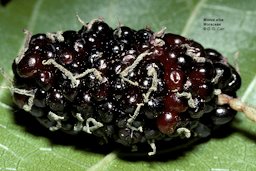 Fig. 1 Morus alba L. 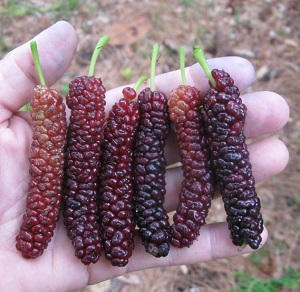 Fig. 2 'Pakistan' cultivar 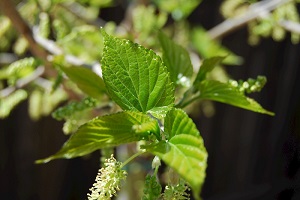 Fig. 6  M. alba L. leaves new growth 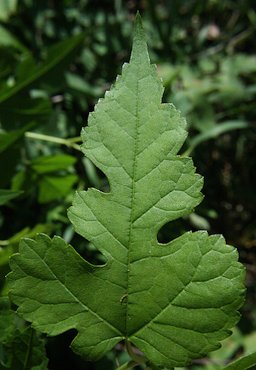 Fig. 7  A mature (M. alba) leaf. The plant was found in Fort Custer Recreation Area, Augusta, Michigan. 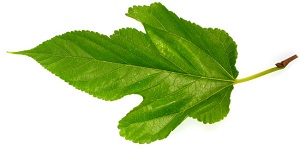 Fig. 8  White mulberry (M. alba L.) leaf 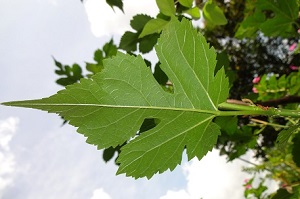 Fig. 9  Underside of the M. alba L. leaf 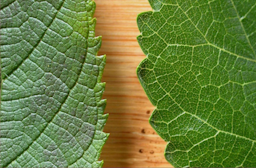 Fig. 10  Upper leaf surfaces of rubra (L) and alba (R): in rubra, note wrinkling with impressed veins, major lateral veins curving up to join adjacent ones, and sharper teeth. 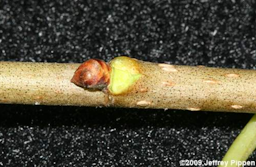 Fig. 17  White mulberry (M. alba). Bud detail and older twig with developed lenticels to the right of the bud with younger twig to the right. 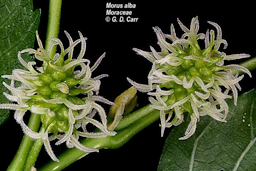 Fig. 18  The photo shows a tight cluster of small green female flowers, with two brush-like stigmas on each pistil. 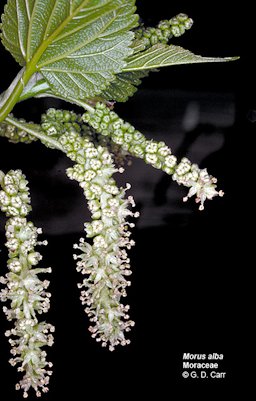 Fig. 19  The pendulous spike-like male inflorescences in the photo are called catkins or aments. Note the small flowers with 4 greenish perianth segments, each with an opposite stamen. 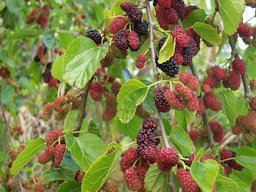 Fig. 27  White mulberry, Morus alba 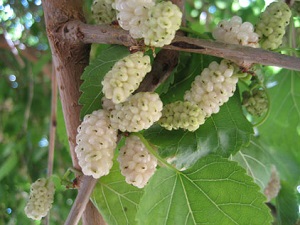 Fig. 28  M. alba L. branch 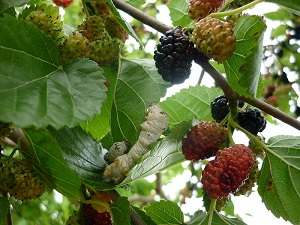 Fig. 29  Silkworm (Bombyx mori) on white mulberry tree 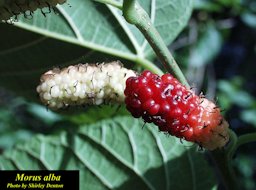 Fig. 30  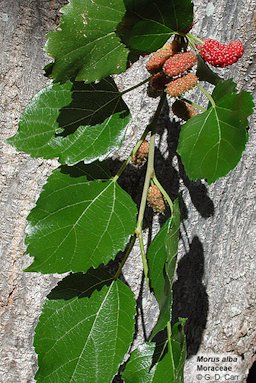 Fig. 31  M. alba, mulberry 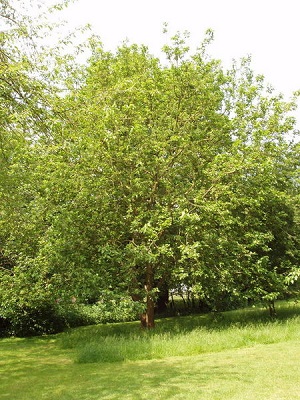 Fig. 38  White mulberry tree at Fulham Palace. The white mulberry is the one used to feed silkworms. 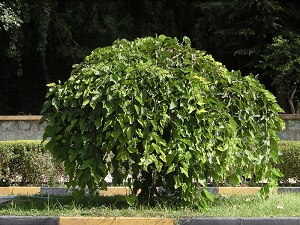 Fig. 39  M. alba L. 'Chaparral'. Weeping habit, fruitless, Tehran. 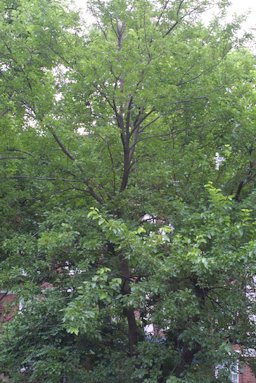 Fig. 40  Vanderbilt University, Nashville, Davidson County, Tennessee, US 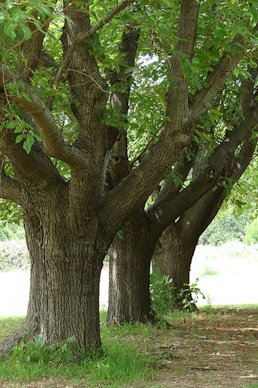 Fig. 41 Fruitless mulberry tree (M. alba). 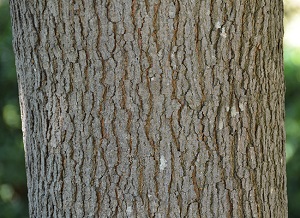 Fig. 42  M. alba L. bark 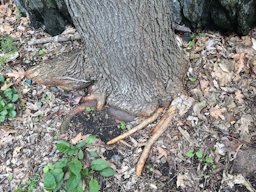 Fig. 43  Exposed roots 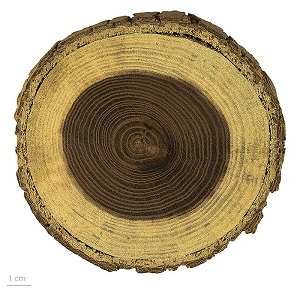 Fig. 44  M. alba L., white mulberry wood. Muséum de Toulouse, Toulouse, France. 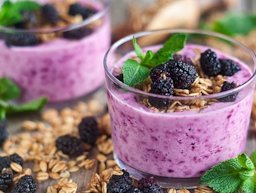 Fig. 45  Mulberry smoothie with granola 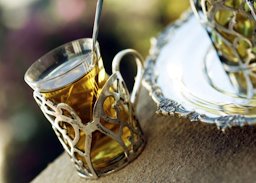 Fig. 46  Mulberry leaves tea (Toot chai) 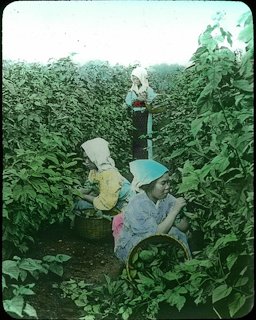 Fig. 51  Gathering mulberry leaves | Scientific
name Morus alba L. Pronunciation MOE-russ AL-buh Common names English: Russian mulberry, silkworm mulberry, white mulberry; Afrikaans: gewone moerbei, witmoerbei; French: mûrier blanc; German: weißer Maulbeerbaum; Japanese Rōmaji: kuwa; Portuguese: amoreira-branca; Spanish: mora, moral blanco, morera blanca; Swedish: vitt mullbär; Transcribed Chinese: sang; Transliterated Russian: šelkovica belaja 10 Synonyms M. alba var. alba; M. alba var. atropurpurea (Roxb.) Bureau; M. alba var. bungeana Bureau; M. alba var. laevigata Wall. ex Bureau; M. alba var. latifolia (Poir.) Bureau; M. alba var. mongolica Bureau; M. alba var. multicaulis (Perr.) Loudon (in review); M. alba var. nigriformis Bureau; M. alba var. serrata (Roxb.) Bureau; M. alba var. stylosa Bureau; M. alba var. tatarica (L.) Loudon; M. alba var. tatarica (L.) 1 Relatives Korean mulberry (M. australis), Himalayan mulberry (M. laevigata); breadfruit (Artocarpus altilis), jackfruit (A. heterophyllus), fig (Ficus spp.), che (Cudrania tricuspidata), African breadfruit (Treculia african) 2 Family Moraceae Origin The white mulberry is native to eastern and central China 2 USDA hardiness zones 4-10 21 Uses Fruit eaten out of hand; used as shade tree; attracts wildlife Height Up to 60-80 ft (18-24.4 m) 2,8 Spread 30-50 ft (9-12 m) 3 Crown Oval, rounded or umbrella shape; dense canopy 3 Plant habit Spreading with a high canopy; variable in form, including drooping and pyramidal shapes 3,10 Growth rate Fast; 36 in. (91.5 cm) per year 3 Longevity 50 to 150 years 3 Trunk/bark/branches Thick tannish-brown braiding ridges; yellowish inner bark is nearly always exposed between ridges 13 Pruning requirement Train the branches to a sturdy framework and little pruning is required Leaves Deciduous; ovate to cordate sometimes lobed; dark green, gold; can be characterized more by its thin, glossy, light green leaves than by the color of its fruit 3,4 Flowers Inconspicuous; flowers in spring; has either male or female flowers (dioecious); trees may be sold as male or female 3 Fruit Fruit a syncarp; prolific; black, purple or white; mutiple fruit drupelets; 0.5-1.5 in. (1-4 cm) 3,6 Season Early May to early June 12 USDA Nutrient Content pdf Light requirement At least 4 hours of full sun per day 21 Soil tolerances Tolerant of poor soil; appears to thrive in the infertile sandy soil found across much of Florida 5 pH preference 5.5-6.5 7 Drought tolerance Although somewhat drought-resistant, mulberries need to be watered in dry seasons 1 Aerosol salt tolerance Good in mild zone 3 Soil salt tolerance Moderate on coast 3 Cold tolerance Mulberry is a temperate fruit tree and is not damaged by the lowest temperatures that occur in Florida 5 Plant spacing At least 15 ft (5 m) apart 1 Roots Potential damage is rated as high 3 Invasive potential * Not a problem species (in Florida) Pest resistance The Caribbean fruit fly sometimes infests the fruit in south Florida 5 Known hazard Fruit leaves an indelible stain 5 Male trees are extremely allergenic and should be avoided, while female trees cause few or no allergies. The pollen from members of the Morus genus can cause allergies ranging from hay fever to asthma. 11 Reading Material Morus alba, Agroforestry Database Red and White Mulberry in Indiana, Purdue University pdf A Mess of Muddled Mulberries, Kentucky Plants, Atlas of Ferns and Flora pdf White Mulberry, Morus alba L., USDA-NRCS PLANTS Database pdf Origin The white mulberry originated in China. It is considered an invasive exotic in some parts of the United States. 5 The introduced white mulberry was brought from China in the early 1800s as a host plant for silk worms in hopes of establishing silk production in the United States. Trees were planted throughout the United States; however, silk production was too costly a venture. Despite the failure of the silk industry, the mulberry trees did well. 8 Description A deciduous shrub or tree, 30 to 50 feet in height and approximately 1.5 feet in diameter. It has low branches and a wide spreading crown. Bark is orange-brown with lenticels when young, becoming gray with long narrow irregular ridges. Glossy green leaves that turn yellow in autumn are 3 to 6 inches long, alternate, stipulate, and variable in shape. Unisex flowers are small, greenish-yellow, with dense spikes. The blackberry-like aggregate fruits, 1 to 1 ¼ inch long, turn from green to white to red to black as they ripen, May to August. 21 Long, straight branches are a distinguishing feature of Morus alba cultivars; the exception being the contorted 'Unryu' and 'Tortuosa' cultivars. 22 Key features for separation of red mulberry and white mulberry, Purdue University
Leaves Leaves occur in three general shapes: entire, mitten (single lobed), and three-lobed. White mulberry leaves are bright green (usually) and shiny above (usually). If any hairs are present, they occur on the main veins beneath. The margins usually have larger, more rounded teeth. The main veins underneath are very prominent compared to those of red mulberry (Fig. 10). 13 Leaves are variably lobed, from zero to up to five or even seven lobes (Fig. 16). Canopy leaves of older trees tend to be unlobed while leaves of stump sprouts or lower branches are often lobed. 16 The single most useful character to distinguish between red and white mulberry is the degree of hairiness on lower leaf surfaces. “Red” mulberry has dense long erect hairs (mostly 0.4–0.7 mm long), which feel distinctly soft to the touch. “White” mulberry has sparse short appressed hairs (mostly 0.2–0.5 mm long), largely restricted to major veins and providing no ‘felty’ feeling. 14
Fig. 14. M. alba L. showing orientation of leaves on twig Fig. 15. Leaves are variable in shape, typically shiny on the top and hairless on the bottom, except on the veins. Fig. 16. Scans of various leaf shapes of M. alba L. Flowers White mulberry buds are smaller than the red mulberry and more domed in the middle, and they usually sit along the center of the twig. The tip of each white mulberry bud is short and needle sharp, and each bud scale has a brown band which is not necessarily on the margin. 13 Mulberries cluster their tiny flowers together into dense and well-defined inflorescences. And, all the flowers on an inflorescence then develop into a single fused unit, which we casually call a fruit. Mulberries make separate flowers with only one or the other sex: “female” flowers lack stamens, and “male” flowers lack pistils (Fig. 20). Both female and male flowers also lack petals. So, for example, a “female” mulberry flower will have only sepals and a pistil, and a “male” flower will have only sepals and stamens. Male flowers therefore cannot make fruit just as female flowers cannot make pollen. Tiny mulberry flowers make miniscule fruits; by sticking together across the entire inflorescence, they masquerade as one large fruit and probably enhance their power to entice birds and improve their dispersal efficiency. But that’s not the mulberry’s only beauty secret. Strictly speaking, mulberry fruits are not that attractive. They are hard dry achenes with the appeal of a grain of sand. To make themselves sweet and juicy, they plump up the only other flower parts they have - their sepals (Fig. 22). This is in contrast to blackberries, denizens of the rose family (Rosaceae), whose flowers, fruits and seeds are structurally distinct from those of mulberries (Fig. 21). 9
Fig. 21. A-C Blackberry. D-F Mulberry. Mulberries resemble blackberries, but blackberries derive from a single flower with multiple fleshy ovaries, whereas mulberries derive from multiple flowers, each with a single hard ovary and fleshy sepals. Fig. 23. Mulberry tree unopened flower bud Fig. 25. Mulberry flowers becoming fruits Fig. 26. Detail of the male inflorescence shown in Fig. 19 Fruit Despite the name, fruit from white mulberry (Morus alba) trees can actually be pink, black, purple, or white. White mulberry trees actually get their name from the color of the flower buds, not their variably colored fruits. These fruits, while sweet, are described by some as insipid when compared to red and black mulberries. 8 The M. alba fruits are generally very sweet but often lack tartness that give flavor éclat. Fruit size is variable, with the largest-fruited cultivars 'Pakistan' (Fig. 2 ), for example, bearing berries over three inches long. 4 White mulberry often sets fruit in clusters while red mulberry trees generally set fruit individually along a branch. 21
Fig. 32, 33. M. alba Fig. 33. M. alba x M. rubra L. Varieties for Florida While, indeed, there are many white-fruited cultivars, most cultivars have ripe fruit that is pink to black in color. The white fruited Morus alba flavor is distinct from the dark fruited Morus alba; the former reported to be reminiscent of watermelon. 21 'Charparral', 'Pendula', 'Teas'. 'Bellaire'. and 'Lingan' are some of the cultivars of Morus alba. 'Charparral' (Fig. 39) is fruitless, with a weeping form. reaching a height of twelve feet. 'Pendula' has a slender weeping form, reaching a height and spread of twenty feet (fruiting variety). 'Teas' is grown for its edible fruit. 'Bellaire' has a distinctive form and multiple trunks. 'Lingan' is a type with leathery, lustrous foliage. It is fruitless, fast growing, and drought resistant.15 Hybrid forms exist between Morus alba and M. rubra. 2
Fig. 35. M. alba 'Pendula' taken in Istanbul Fig. 36,37. M. alba 'Pendula' in Syretsky arboretum, Kiev, Ukraine Hybrid Mulberry; Morus 'Illinois Everbearing', Arthur Lee Jacobson Harvesting Fruit should be allowed to thoroughly ripen on the tree for best quality and flavor. Harvest by shaking the branches over a clean sheet in May. 7 The fruits of white mulberries are often harvested by spreading a sheet on the ground and shaking the limbs. A surprising quantity can be gathered from a comparatively small and young tree. Separate ripe fruits from the leaves, twigs, insects, and unripe fruits that also fall by dumping the whole mess into a pail of water. Everything except the ripe berries will float and can be decanted. 4 Pollination Mulberries are simply wind pollinated. 9 Propagation Mulberries can be grown from seed, although the plants can take 10 years or more to bear. Seed should be sown as soon as extracted from the fruit, although white mulberry seeds germinate better after stratifying one to three months before planting. 2 Sprig budding is the most common method for grafting mulberries. Hardwood, softwood and root cuttings also are suitable methods for propagating mulberries. Softwood cuttings of white mulberries root easily when taken in midsummer and treated with rooting hormone. 2 Culture The white mulberry is the most cold-hardy of the three species, although this varies from one clone to another. Some are damaged at 25° F, while others are unfazed at -25° F. 2 Pruning No special pruning techniques are needed after the branches have been trained to a sturdy framework, except to remove dead or overcrowded wood. A mulberry tree can be kept to a tidy form by developing a set of main branches, and then pruning laterals to 6 leaves in July in order to develop spurs near the main branches. It is not advisable to prune the trees heavily since the plant is inclined to bleed at the cuts. Cuts of more than two inches in diameter generally do not heal and should be avoided at all cost. The bleeding will be less severe if the tree is pruned while it is dormant. Fertilizing Mulberries generally thrive with minimal fertilization. An annual application of a balanced fertilizer such as 10:10:10 NPK will maintain satisfactory growth. 2 Irrigation The first year is a critical time for the establishment of a new mulberry. Water thoroughly twice a week on light soils and once a week on clay soils. Soak the entire root system deeply. 7 Although somewhat drought-resistant, mulberries need to be watered in dry seasons. If the roots become too dry during drought, the fruit is likely to drop before it has fully ripened. 2 Pests/Diseases Mulberries are generally free of pests and diseases, although cankers and dieback can occur. In some areas "popcorn disease" is an occasional problem, in which fruits swell to resemble popped corn. M. alba/M. rubra hybrids are particularly prone to this condition. The disease carries on from one season to the next, so collecting and burning infected fruits help control it. 1 Food Uses The berries can be eaten out of hand or used in any way that other berries are used, such as in pies, tarts, puddings or sweetened and pureed as a sauce. Slightly unripe fruits are best for making pies and tarts. Mulberries blend well with other fruits, especially pears and apples. They can also be made into wine and make an excellent dried fruit, especially the black varieties. 2 Unwashed the berries will keep several days in a refrigerator in a covered container. 2 Leaves are highly nutritious and contain vitamins B complex (except B12), C (200-300 mg/100 g), D and flavonols. They are sometimes eaten as a vegetable; fruit is eaten fresh or made into juice and stews. 6
Fig. 47. Cold mulberry soup with ginger yogurt Fig. 48. Mulberry pie Fig. 49. Mulberry gin liqueur Fig. 50. Mulberry lemonade Medicinal Properties ** Bark is said to be good in the treatment of stomach-ache, neuralgic pains and dropsy; leaves and young branchlets used for treating heavy colds, cough, red eye, insect bites and wounds; fruit used in the treatment of sore throat, dyspepsia and melancholia. 6 Other Uses Wood is valued for sporting goods due to its elasticity and flexibility when steamed, being considered as good as ash. Sapwood is white to yellowish-white, heart-wood golden brown, darkening after exposure; light to moderately heavy, straight-grained, not liable to split, but shows tendency to warp, moderately durable under cover, easy to work and finish, used mainly for hockey sticks, tennis and badminton rackets and racket presses, cricket bats, house building materials, agricultural implements, and furniture. 17 Wood yields sulphate pulp with satisfactory strength for white writing and printing paper; bark is worked in to paper pulp and fibre is suitable for the textile industry. 6 Fruit contains cineole, geraniol, linalyl acetate, alpha-pinene and limone as major components of the essential oils. 6 Sericulture There are four types of natural silk which are commercially known and produced in the world. Among them mulberry silk is the most important and contributes as much as 90 per cent of world production, therefore, the term "silk" in general refers to the silk of the mulberry silkworm. Bulk of the commercial silk produced in the world comes from this variety and often generally refers to mulberry silk. Mulberry silk comes from the silkworm, Bombyx mori L (Fig. 29,56) which solely feeds on the leaves of mulberry plant (Morus alba). These silkworms are completely domesticated and reared indoors. 18 They have a preference for white mulberry, having an attraction to the mulberry odorant cis-Jasmone. The female silkmoth lays 300 to 500 eggs. The silkmoth eggs hatch to form larvae or caterpillars, known as silkworms. The larvae feed on mulberry leaves. Having grown and moulted several times, the silkworm extrudes a silk fibre and forms a net to hold itself. It swings itself from side to side in a figure '8', distributing the saliva that will form silk. The fibroin protein, which is secreted from two salivary glands in the head of each worm, and a gum called sericin, cements the filaments. The silkworm spins approximately one mile of filament and completely encloses itself in a cocoon in about two or three days. The amount of usable quality silk in each cocoon is small. As a result, about 2,500 silkworms are required to produce a pound of raw silk. The intact cocoons are boiled, killing the silkworm pupa. The silk is obtained by brushing the undamaged cocoon to find the outside end of the filament. The silk filaments are then wound on a reel. One cocoon contains approximately 1,000 yards of silk filament. The silk at this stage is known as raw silk. One thread comprises up to 48 individual silk filaments. 19
Fig. 52. Silk cocoons and spool at Jim Thompson House,Thailand Fig. 53. Thai man spools silk at Jim Thompson House, Thailand Fig. 54. A person weaving silk at a loom, Ban Tha Sawang, Surin Province, Thailand Fig. 55. Handwoven, handmade silk cloth with natural dyes from Ban Tha Sawang, Surin Province, Thailand Fig. 56. Silkworm Bombyx mori L Fig. 57. Silkworm and cocoon Fig. 58. Raw silk of domesticated silk worms, showing its natural shine. Raw silk in the Suzhou No.1 Silk Mill in Suzhou (Jiangsu), China. Reference Inventory of Equipment for Silk Processing at the Cottage Level, Food and Agriculture Organization of the United Nations pdf Wormspit has a wonderful collection of photos of the entire silkworm cycle and tips for rearing them at home. ext. link Invasive Status M. alba is considered invasive in the Northeastern area by the Invasive Plant Atlas of the United States. Weed of the Week: White Mulberry, Morus alba, USDA Forest Service pdf Other Edible Morus species: Black Mulberry, Morus nigra Red Mulberry, Morus rubra General It has been suggested that the generic name of the mulberry, Morus, was derived from the Latin word ‘mora’ (delay), from the tardy expansion of the buds. An alternative explanation is that it comes from the Celtic word ‘mor’ (black), referring to the colour of the fruit. 6 Thai silk is produced from the cocoons of domesticated silkworms. The Samia ricini produces matte Eri silk and the Bombyx mori, the glossy mulberry silk. 4
Fig. 59. Stamp of Ukraine Fig. 60. White gold mulberry earrings. This pair of mulberry earrings is decorated with granulation and repoussé. Fig. 61. Longitudinal section, showing heartwood and sapwood
Fig. 62. M. alba species distribution map Further Reading Feasting on the Kampong Mulberry, Tropical Fruit News RFCI Mulberry, California Rare Fruit Growers Mulberry Tree, Just Fruits and Exotics nursery Mulberry Express, Eat The Weeds Morus alba L., Handbook of Energy Crops Morus alba Fruitless Cultivars: White Mulberry, University of Florida pdf Mulberry Botanical Art List of Growers and Vendors | ||||||||||||||||||||||||||||||||||||||||||||||||||||||||||||||||||||||||||
| Bibliography 1 "Synonyms for Morus alba." The Plant List (2013), Version 1.1, www.theplantlist.org. Accessed 5 Mar. 2020. 2 "Mulberry." California Rare Fruit Growers, 1996, crfg.org/wiki/fruit/mulberry/. Accessed 5 Mar. 2020. 3 SelecTree. "Morus alba Tree Record." SelecTree, Urban Forest Ecosystems Institute, 1995-2020, selectree.calpoly.edu/tree-detail/morus-alba. Accessed 5 Mar. 2020. 4 "Thai silk." Wikipedia, en.wikipedia.org/wiki/Thai_silk. Accessed 5 Mar. 2020. 5 Boning, Charles R. Florida's Best Fruiting Plants- Native and Exotic Trees, Shrubs, and Vines. Sarasota, Pineapple Press, 2006. 6 Orwa, C., et al. "Morus alba L." Agroforestree Database: a tree reference and selection guide, version 4.0, 2009, Agroforestry, old.worldagroforestry.org/treedb2/AFTPDFS/Morus_alba.PDF. Accessed 5 Mar. 2020. 7 "Mulberry Growing Guide." Just Fruits and Exotics, justfruitsandexotics.com/wp-content/uploads/JFE-Growing-Guide-Mulberry.pdf. Accessed 5 Mar. 2020. 8 "Mulberry (Morus spp.)." Gardening Solutions, UF/IFAS, gardeningsolutions.ifas.ufl.edu/plants/trees-and-shrubs/trees/mulberry.html. Accessed 5 Mar 2020. 9 katherineapreston. "Figs and Mulberries, inside and out." The Botanist in the Kitchen, 7 Sept. 2013, (CC BY-NC-SA 3.0), botanistinthekitchen.blog/2013/09/07/figs-and-mulberries-inside-and-out/. Accessed 6 Mar. 2020. 10 "Taxon: Morus alba L." USDA, Agricultural Research Service, National Plant Germplasm System, Germplasm Resources Information Network (GRIN-Taxonomy), National Germplasm Resources Laboratory, Beltsville, Maryland, 2020, U.S. National Plant Germplasm System, npgsweb.ars-grin.gov/gringlobal/taxonomydetail.aspx?id=24607. Accessed 15 Mar. 2020. 11 Andreu, Michael G. et al. "Morus rubra, Red Mulberry." School of Forest Resources and Conservation, UF/IFAS Extension. FOR 264, Original pub. June 2010, Reviewed Apr. 2016. edis.ifas.ufl.edu/fr326. Accessed 22 Oct. 2017. 12 Cowley Gilbert, Brandy. "Mulberry Tree." Just Fruits and Exotics, www.justfruitsandexotics.com/JFE/product-category/fruit-trees/mulberry/. Accessed 25 Oct. 2017. 13 Weeks, Sally S. "Red and White Mulberry in Indiana." Department of Forestry and Natural Resources, Purdue University, FRN-237, 17 Sept. 2003, Reviewed 1 Sept. 2015, mdc.itap.purdue.edu/item.asp?itemID=19438. Accessed 11 Mar. 2020. 14 Campbell, Julian. "Characters that tend to differentiate red mulberry (rubra) versus white mulberry (alba). Taxonamic and Ecological Notes, Morus: Muddled Mulberries, Bluegrass Woodland, bluegrasswoodland.com/Notes_on_Species.html. Accessed 21 Oct. 2017. 15 Moore, Lincoln M. "White Mulberry, Morus alba L." Plant Guide, National Plant Data Center, USDA, NRCS, National Plant Data Team, Greensboro, NC 27401-4901, USA, 2020, The PLANTS Database, plants.usda.gov. Accessed 13 Mar. 2020. 16 Pippen, Jeff. "White Mulberry (Morus alba), Leaves are variably lobed, from zero to up to five or even seven lobes. Canopy leaves of older trees tend to be unlobed while leaves of stump sprouts or lower branches are often lobed." North Carolina Wildflowers, no. 8998, Forest edge in Durham Co., NC, 15 June 2009, www.jeffpippen.com/plants/morus.htm. Accessed 13 Mar. 2020. 17 Duke, James A. "Morus alba L." Handbook of Energy Crops, Purdue University, Center for New Crops and Plant Products, unpublished, NewCROPTM, 1983, hort.purdue.edu/newcrop/duke_energy/Morus_alba.html. Accessed 14 Mar. 2020. 18 "Types of Silk." International Sericultural Commission, inserco.org/en/?q=types_of_silk. Accessed 14 Mar. 2020. 19 "Bombyx mori." Wikipedia, en.wikipedia.org/wiki/Sericulture. Accessed 16 Mar. 2020. 20 "Weed of the Week: White Mulberry, Morus alba." Invasive Plant Atlas of the United States, USDA Forest Service, www.invasive.org/weedcd/pdfs/wow/white_mulberry.pdf. Accessed 14 Mar. 2020. 21 Travis, Mark. Growing Mulberry, www.growingmulberry.org. Accessed 20 Mar. 2020. Photographs Fig. 1 Carr, Gerald D. "A multiple fruit derived from a female inflorescence is shown." University of Hawai'i, www.botany.hawaii.edu/faculty/carr/mor.htm. Accessed 6 Mar. 2020. Fig. 2 Cowley Gilbert, Brandy. "Pakistan mulberry, Seedless 4 Inch Fruit!" Just Fruit and Exotics, www.justfruitsandexotics.com/JFE/product/pakistan-mulberry-tree/#prettyPhoto. Accessed 25 Oct. 2017. Fig. 3 elheffernan. "Morus alba L." iNaturalist Observations, SEINet Portal Network, United States, New York, 11 May 2018, SEINet, (CC BY-NC), swbiodiversity.org/seinet/collections/individual/index.php?occid=19955238. Accessed 11 Mar. 2020. Fig. 4 Vidéki, Robert. "Morus alba." Doronicum Kft., Center for Invasive Species and Ecosysteme Health, University of Georgia, no. 5395980, Bugwood.org, (CC BY-NC 3.0 US), www.forestryimages.org/browse/detail.cfm?imgnum=5395980. Accessed 17 Mar. 2020. Fig. 5 Harms, Bill. "Morus alba L." SEINet Portal Network, United States, Maryland, cat. no. PRR001280, 17 May 2012, SEINet, swbiodiversity.org/seinet/collections/individual/index.php?occid=16623161. Accessed 10 Mar. 2020. Fig. 6 FASTILY. "A close-up of young, budding leaves on a Morus alba (White Mulberry) in the Spring." Wikimedia Commons, 2009. (CC BY-SA 3.0). commons.wikimedia.org/wiki/Morus_alba#/media/File:Morusalbaleaves3800ppx.JPG. Accessed 23 Oct. 2017. Fig. 7 Hough, Cody. "A mature (Morus alba) leaf. The plant was found in Fort Custer Recreation Area, Augusta, Michigan." Wikipedia Commons, 16 June 2008, (CC BY-SA 3.0), commons.wikimedia.org/wiki/Category:Morus_rubra#/media/File:Morus_rubra.jpg. Accessed 10 Mar. 2020. Fig. 8,11,25,42 Ritter, M, W., et al. "Morus alba fruit." SelecTree, Urban Forest Ecosystems Institute, Morus alba Tree Record, UC Berkeley Botanic Garden - Berkeley, CA and San Luis Obispo, CA, 1995-2020, selectree.calpoly.edu/tree-detail/morus-alba. Accessed 21 Oct. 2017. Fig. 9,12 Kwan. "Morus alba." Plant Observatory, 2013. www.natureloveyou.sg/Morus%20alba/Main.html. Accessed 21 Oct. 2017. Fig. 10 Weeks, Sally S. "Upper leaf surfaces of rubra (L) and alba (R): in rubra, note wrinkling with impressed veins, major lateral veins curving up to join adjacent ones, and sharper teeth." A Mess of Muddled Mulberries(especially in Kentucky), Initial version 2013, updated/corrected 2014, 2109, Bluegrass Woodland, bluegrasswoodland.com/uploads/Muddled_Mulberries_in_Kentucky.pdf. Accessed 12 Mar. 2020. Fig. 13 Kurtz, Joseph. "Morus alba." iNaturalist Research-grade Observations, no. 6964233, 6 July 2017, (CC BY-NC 4.0), www.inaturalist.org/observations/6964233. Accessed 17 Mar. 2020. Fig. 14 Baskauf, Steven J. "Morus alba L. showing orientation on twig." Bioimages, Vanderbilt University, Nashville, Davidson County, Tennessee, US, 16 May 2002, (CC BY 4.0) , bioimages.vanderbilt.edu/baskauf/11057. Accessed 11 Mar. 2020. Fig. 15 Smith, David G. "Morus alba L., white mulberry. Leaves are variable in shape, typically shiny on the top and hairless on the bottom, except on the veins." Delaware Wildflowers, White Clay Creek State Park, Possum Hill, www.delawarewildflowers.org/plant.php?id=1294&mode=S. Accessed 13 Mar 2020. Fig. 16 Jaknouse. "Scans of various leaf shapes of Morus alba." Wikimedia Commons, 2009, (CC BY 3.0.), commons.wikimedia.org/wiki/File:Morus_alba-leaves.jpg. Accessed 21 Oct. 2017. Fig. 17 Pippen, Jeffrey. "White Mulberry (Morus alba), Bud detail and older twig with developed lenticels to the right of the bud with younger twig to the left." North Carolina Wildflowers, #0507, Forest edge in Durham Co., NC, 13 Oct 2009, www.jeffpippen.com/plants/morus.htm. Accessed 13 Mar. 2020. Fig. 18 Carr, G. D. "Morus alba Moraceae." University of Hawai'i, via Bluegrass Woodland, www.botany.hawaii.edu/faculty/carr/images/mor_alb_f.jpg. Accessed 12 Mar. 2020. Fig. 19 Carr, Gerald D. "The pendulous spike-like male inflorescences in the second photo are called catkins or aments. Note the small flowers with 4 greenish perianth segments, each with an opposite stamen." University of Hawai'i, www.botany.hawaii.edu/faculty/carr/mor.htm. Accessed 6 Mar. 2020. Fig. 20 Preston, Katherine A. "Mulberry inflorescences." Figs and Mulberries, inside and out, 7 Sept. 2013, The Botanist in the Kitchen, (CC BY-NC-SA 3.0), botanistinthekitchen.blog/2013/09/07/figs-and-mulberries-inside-and-out/. Accessed 6 Mar. 2020. Fig. 21 Preston, Katherine A. "A-C Blackberry. D-F Mulberry. Mulberries resemble blackberries, but blackberries derive from a single flower with multiple fleshy ovaries, whereas mulberries derive from multiple flowers, each with a single hard ovary and fleshy sepals." Figs and Mulberries, inside and out, 7 Sept. 2013, The Botanist in the Kitchen, (CC BY-NC-SA 3.0), botanistinthekitchen.blog/2013/09/07/figs-and-mulberries-inside-and-out/. Accessed 6 Mar. 2020. Fig. 22 Preston, Katherine A. "Mulberry flowers becoming fruits." Figs and Mulberries, inside and out, 7 Sept. 2013, The Botanist in the Kitchen, (CC BY-NC-SA 3.0), botanistinthekitchen.blog/2013/09/07/figs-and-mulberries-inside-and-out/. Accessed 6 Mar. 2020. Fig. 23 FASTILY. "Mulberry tree unopened flower bud." Wikimedia Commons, 16 Mar. 2009, (CC BY-SA 3.0), Image cropped, commons.wikimedia.org/wiki/Morus_alba#/media/File:Mulberryflowerbud3000px.JPG. Accessed 16 Mar. 2020. Fig. 24 lizree "Morus alba L., White mulberry." iNaturalist:NYC-EcoFlora, SEINet Portal Network, United States, New York, Bronx, 28 Apr. 2018, SEINet, (CC BY-NC), swbiodiversity.org/seinet/collections/individual/index.php?occid=19671894. Accessed 10 Mar. 2020. Fig. 26 Carr, Gerald D. "Morus alba Moraceae." Oregon Flora Image Project, UC Davis Campus, Davis, Yolo Co., California, 15 Apr. 1988, University of Hawai'i, www.botany.hawaii.edu/faculty/carr/ofp/mor_alb.htm. Accessed 10 Mar. 2020. Fig. 27 B.navez. "Morus alba (fruits)." Wikimedia Commons, 17 Sept. 2006, GFDL, (CC BY-SA 3.0), commons.wikimedia.org/wiki/File:Morus_alba_fruits.jpg. Accessed 14 Mar. 2020. Fig. 28 Smith, Jenny. "DMOR 8 - Morus alba L. branch, AR-239 - Uzbekistan." USDA, Agricultural Research Service, National Plant Germplasm System, Germplasm Resources Information Network (GRIN-Taxonomy), National Germplasm Resources Laboratory, Beltsville, Maryland, 2019, U.S. National Plant Germplasm System, npgsweb.ars-grin.gov/imagedisplay.aspx?lnk=223866. Accessed 24 Oct. 2017. Fig. 29 Gorkaazk. "Silkworm. Mulberry tree." Wikimedia Commons, 2010, (CC BY 3.0), commons.wikimedia.org/wiki/File:Silkworm_mulberry_tree_zetarra_marugatze_arbolean1.JPG. Accessed 24 Oct. 2017. Fig. 30 Denton, Shirley. "Morus alba L." Institute for Systematic Botany, University of South Florida, Tampa, S. M. Landry and K. N. Campbell (application development), USF Water Institute, 2020, Atlas of Florida Plants, florida.plantatlas.usf.edu/Photo.aspx?id=1370&display=photos. Accessed 13 Mar 2020. Fig. 31 Carr, Gerald D. "Morus alba, mulberry." University of Hawai'i, www.botany.hawaii.edu/faculty/carr/mor.htm. Accessed 6 Mar. 2020. Fig. 32 Smith, Jenny. "DMOR 24 - Morus alba L. Thompson, California US." USDA, Agricultural Research Service, National Plant Germplasm System, Germplasm Resources Information Network (GRIN-Taxonomy), National Germplasm Resources Laboratory, Beltsville, Maryland, 2019, U.S. National Plant Germplasm System, npgsweb.ars-grin.gov/gringlobal/imagedisplay.aspx?lnk=222367. Accessed 24 Oct. 2017. Fig. 33 Smith, Jenny. "DMOR 17 - Morus alba x M. rubra, Illinois Everbearing, Illinois, United States." USDA, Agricultural Research Service, National Plant Germplasm System, Germplasm Resources Information Network (GRIN-Taxonomy), National Germplasm Resources Laboratory, Beltsville, Maryland, 2019, U.S. National Plant Germplasm System, npgsweb.ars-grin.gov/gringlobal/accessiondetail.aspx?1629209. Accessed 24 Oct. 2017. Fig. 34 Ohio State Weed Lab, The Ohio State University, Center for Invasive Species and Ecosysteme Health, University of Georgia, no. 1550141, Bugwood.org, (CC BY-NC 3.0 US), www.forestryimages.org/browse/detail.cfm?imgnum=1550141. Accessed 17 Mar. 2020. Fig. 35 UÄur BaÅak. "Morus alba 'Pendula' taken in Istanbul." Enclyclopedia of Life, via Wikimedia Commons, no. 1372991, 2 Sept. 2006, (CC BY-SA 3.0), EOL, eol.org/media/7178399. Accessed 15 Mar. 2020. Fig. 36,37 Аимаина хикари. "Morus alba 'Pendula' in Syretsky arboretum, Kiev, Ukraine." Enclyclopedia of Life, via Wikimedia Commons, no. 33743392, 1 June 2014, EOL, (CC0 1.0), eol.org/media/7178449. Accessed 16 Mar. 2020. Fig. 38 Hawgood, David. "White Mulberry tree at Fulham Palace. The white mulberry is the one used to feed silkworms - geograph.org.uk." Geograph project collection, 2008, Wikimedia Commons, (CC BY-SA 2.0), commons.wikimedia.org/wiki/File:White_Mulberry_tree_at_Fulham_Palace_-_geograph.org.uk_-_835695.jpg. Accessed 24 Oct. 2017. Fig. 39 Alborzagros. "Morus alba. Tehran." Wikimedia Commons, 2011, (CC BY-SA 4.0), commons.wikimedia.org/wiki/File:Morus_alba_-_Tehran.JPG. Accessed 23 Oct. 2017. Fig. 40 Baskauf, Steven J. "Morus alba L." Bioimages, Vanderbilt University, Nashville, Davidson County, Tennessee, US, 11 June 2002, (CC BY 4.0), bioimages.vanderbilt.edu/baskauf/12229. Accessed 11 Mar. 2020. Fig. 41 Loadmaster (David R. Tribble). "Fruitless mulberry tree (Morus alba)." Wikimedia Commons, 26 July 2009, GFDL, (CC BY-SA 3.0), commons.wikimedia.org/wiki/File:FruitlessMulberry-3965.jpg. Accessed 13 Mar. 2020. Fig. 42 Kenchaya."Morus alba L., White mulberry." iNaturalist:NYC-EcoFlora, SEINet Portal Network, United States, New York, 30 Apr. 2018, SEINet, (CC BY-NC), swbiodiversity.org/seinet/collections/individual/index.php?occid=19952144. Accessed 10 Mar. 2020. Fig. 44 Culos, Roger. "Morus alba, white mulberry wood. Muséum de Toulouse, Toulouse, France. - MHNT." Wikimedia Commons, 2012, (CC BY-SA 3.0), commons.wikimedia.org/wiki/File:Morus_alba_MHNT.BOT.2006.0.1270.JPG. Accessed 23 Oct. 2017. Fig. 45 Dzhordzhev, Mitko. "Mulberry smoothie with granola." Foodista, 6 Oct. 2017, (CC BY 3.0), www.foodista.com/recipe/W6JZYTMS/mulberry-smoothie-with-granola. Accessed 6 Mar. 2020. Fig. 46 "Mulberry leaves tea (Toot chai)." Taste of Beirut, 11 Oct 2010, www.tasteofbeirut.com/mulberry-leaves-tea/. Accessed 17 Mar. 2020. Fig. 47 Weathers, Sanura. "Cold Mulberry Soup With Ginger Yogurt." Foodista, June 29, 2010, (CC BY 3.0), www.foodista.com/recipe/3DZNLXX4/cold-mulberry-soup-with-ginger-yogurt. Accessed 6 Mar. 2020. Fig. 48 Culbert, Daniel. Mulberry pie, June 2018. Fig. 49 "Mulberry Gin Liqueur." Shakespeare Distillery, Cotswold Trading, www.cotswoldtrading.com/gifts-c7/boutique-spirits-c174/shakespeare-distillery-mulberry-gin-liqueur-50cl-p13048. Accessed 17 Mar. 2020. Fig. 50 Mathur, Neha. “Mulberry Lemonade.” Whisk Affair, 6 Apr. 2017, Updated 7 Mar. 2020, www.whiskaffair.com/mulberry-lemonade/. Accessed 6 Mar. 2020. Fig. 51 "Gathering Mulberry Leaves." University of Victoria Libraries, Colour-tinted transparencies depicting life in Japan ca. 1910, Wikimedia Commons, via Flickr, 23 July 2015, commons.wikimedia.org/wiki/File:Gathering_Mulberry_Leaves_(19762314080).jpg. Accessed 14 Mar. 2020. Fig. 52 Logan, D Ramey. "Silk Spool Jim Thompson." Wikimedia Commons, 7 Mar. 2013, (CC BY-SA 3.0), commons.wikimedia.org/wiki/File:Silk_Spool_Jim_Thompson_Photo_D_Ramey_Logan.jpg. Accessed 14 Mar. 2020. Fig. 53 Logan, D Ramey. "Thai man spools silk at Jim Thompson House." Wikimedia Commons, 7 Mar. 2013, (CC BY-SA 3.0), commons.wikimedia.org/wiki/File:Thai_man_spools_silk_at_Jim_Thompson_House_photo_D_Ramey_Logan.jpg. Accessed 14 Mar. 2020. Fig. 54 Harrison, JJ. "A person weaving silk at a loom, Ban Tha Sawang, Surin Province, Thailand." Wikimedia Commons, 18 Dec. 2012, (CC BY-SA 3.0), commons.wikimedia.org/wiki/File:Thai_Silk_Weaving_3_-_Ban_Tha_Sawang.jpg. Accessed 14 Mar. 2020. Fig. 55 Harrison,JJ. "Handwoven, handmade silk cloth with natural dyes from Ban Tha Sawang, Surin Province, Thailand." Wikimedia Commons, 18 Dec. 2012, (CC BY-SA 3.0), commons.wikimedia.org/wiki/File:Thai_Silk_Cloth_-_Ban_Tha_Sawang.jpg. Accessed 14 Mar. 2020. Fig. 56 "Silkworm Bombyx mori L." International Sericultural Commission, inserco.org/en/?q=types_of_silk. Accessed 14 Mar. 2020. Fig. 57 Srithern. "Silkworm and cocoon." Wikimedia Commons, 17 Oct. 2011, (CC BY-SA 3.0), commons.wikimedia.org/wiki/File:Silkworm_%26_cocoon.jpg. Accessed 16 Mar. 2020. Fig. 58 Kübelbeck, Armin. "Raw silk of domesticated silk worms, showing its natural shine. Raw silk in the Suzhou No.1 Silk Mill in Suzhou (Jiangsu), China." Wikimedia Commons, 4 Nov. 2007, (CC BY-SA 3.0), commons.wikimedia.org/wiki/File:Silk_raw_01a.jpg. Accessed 16 Mar. 2020. Fig. 59 Укрпошта. "Stamps of Ukraine." Enclyclopedia of Life, via Wikimedia Commons, no. 24010316, 10 Apr. 2014, EOL, Public Domain, eol.org/media/7178418. Accessed 16 Mar. 2020. Fig. 60 Syrian artist. "Gold mulberry earrings. This pair of mulberry earrings is decorated with granulation and repoussé." The Walters Art Museum, VO.70 (57.608, 57.609), 11th-10th century BC, (CC 0), art.thewalters.org/detail/77401/pair-of-mulberry-earrings/. Accessed 8 May 2020. Fig. 61 Beentree. "Morus alba. Longitudinal section, showing heartwood and sapwood." Wikimedia Commons, 1 Jan. 2008, GFDL, (CC BY-SA 4.0), commons.wikimedia.org/wiki/Morus_alba#/media/File:Morus_alba_wood_ray_section_1_beentree.jpg. Accessed 16 Mar. 2020. Fig. 62 Wunderlin, R. P., et al. "Morus alba L. Species Distribution Map." Institute for Systematic Botany, University of South Florida, Tampa, S. M. Landry and K. N. Campbell (application development), USF Water Institute, 2020, Atlas of Florida Plants, florida.plantatlas.usf.edu/Plant.aspx?id=1357. Accessed 5 Mar. 2020. * UF/IFAS Assessment of Non-native Plants in Florida's Natural Areas ** Information provided is not intended to be used as a guide for treatment of medical conditions. Published 18 Mar. 2020 LR. Last update 8 May 2020 LR | |||||||||||||||||||||||||||||||||||||||||||||||||||||||||||||||||||||||||||


